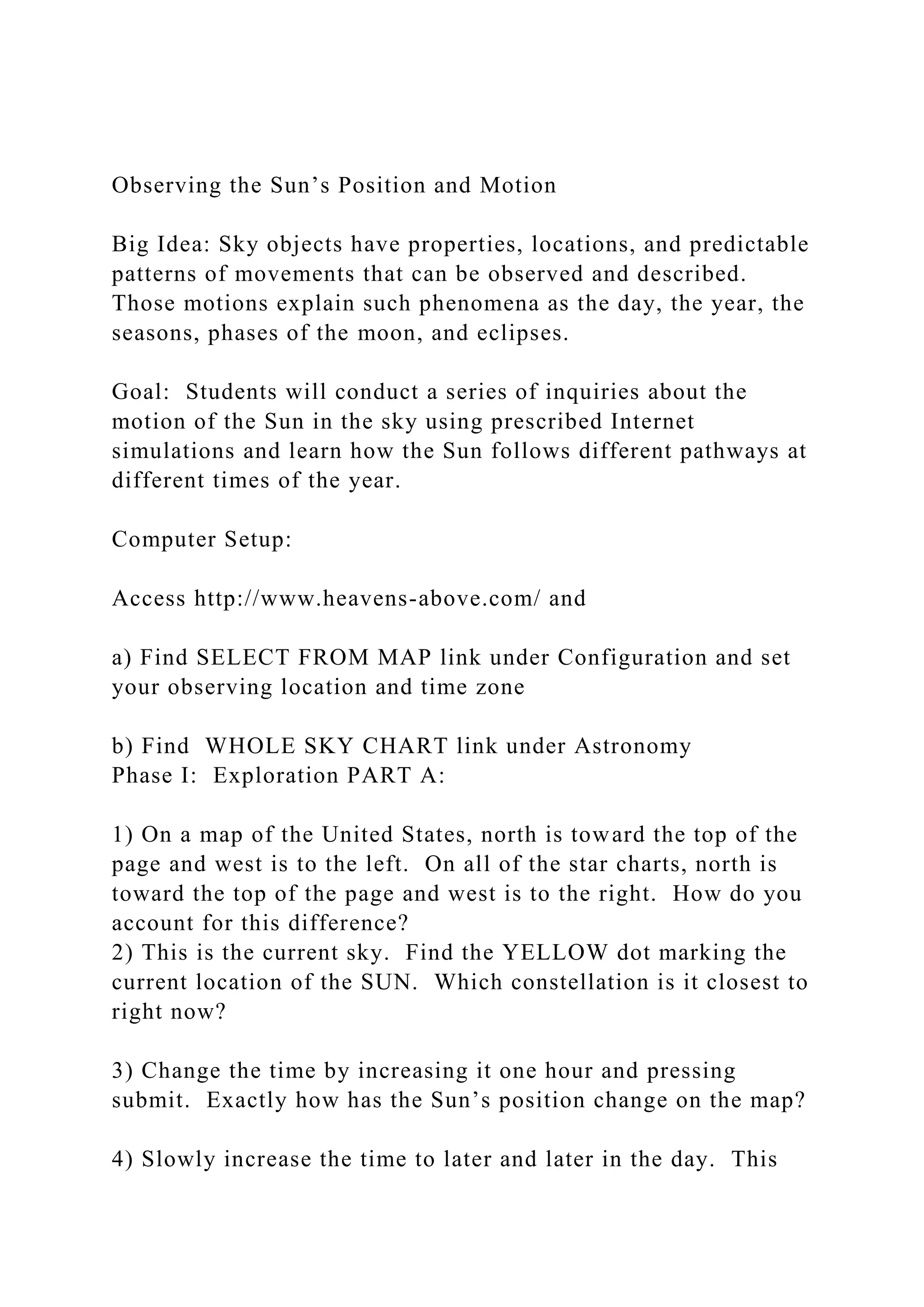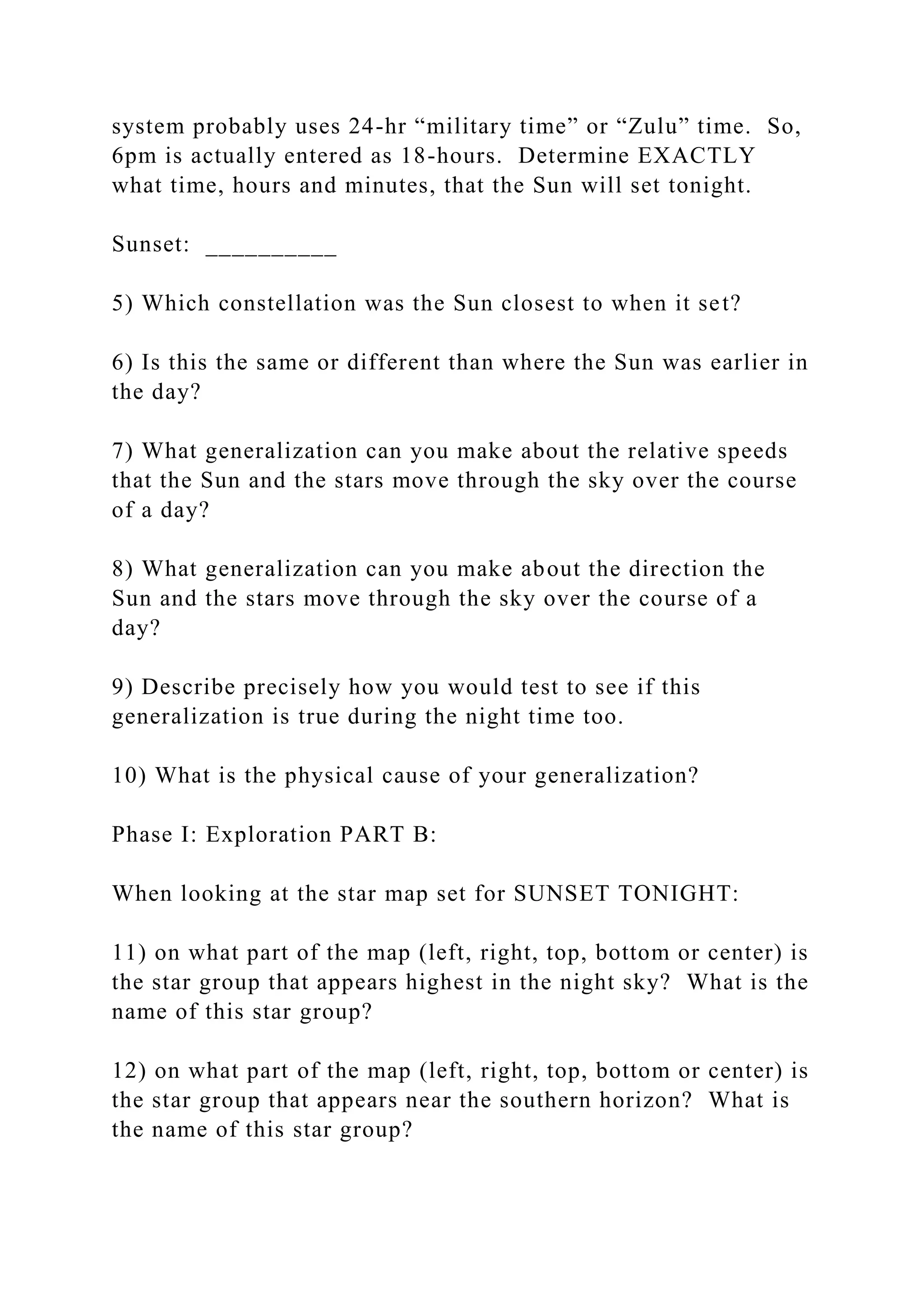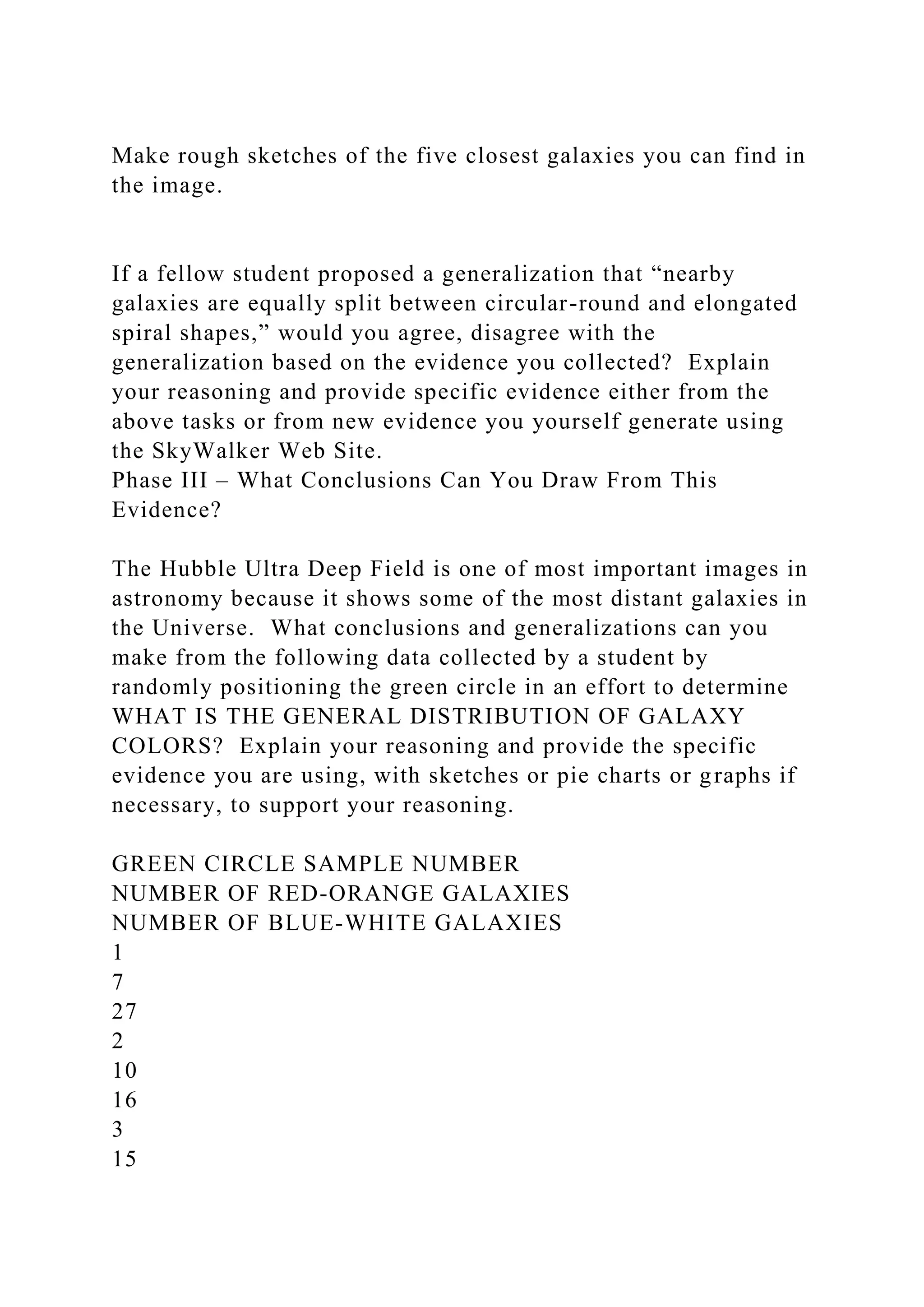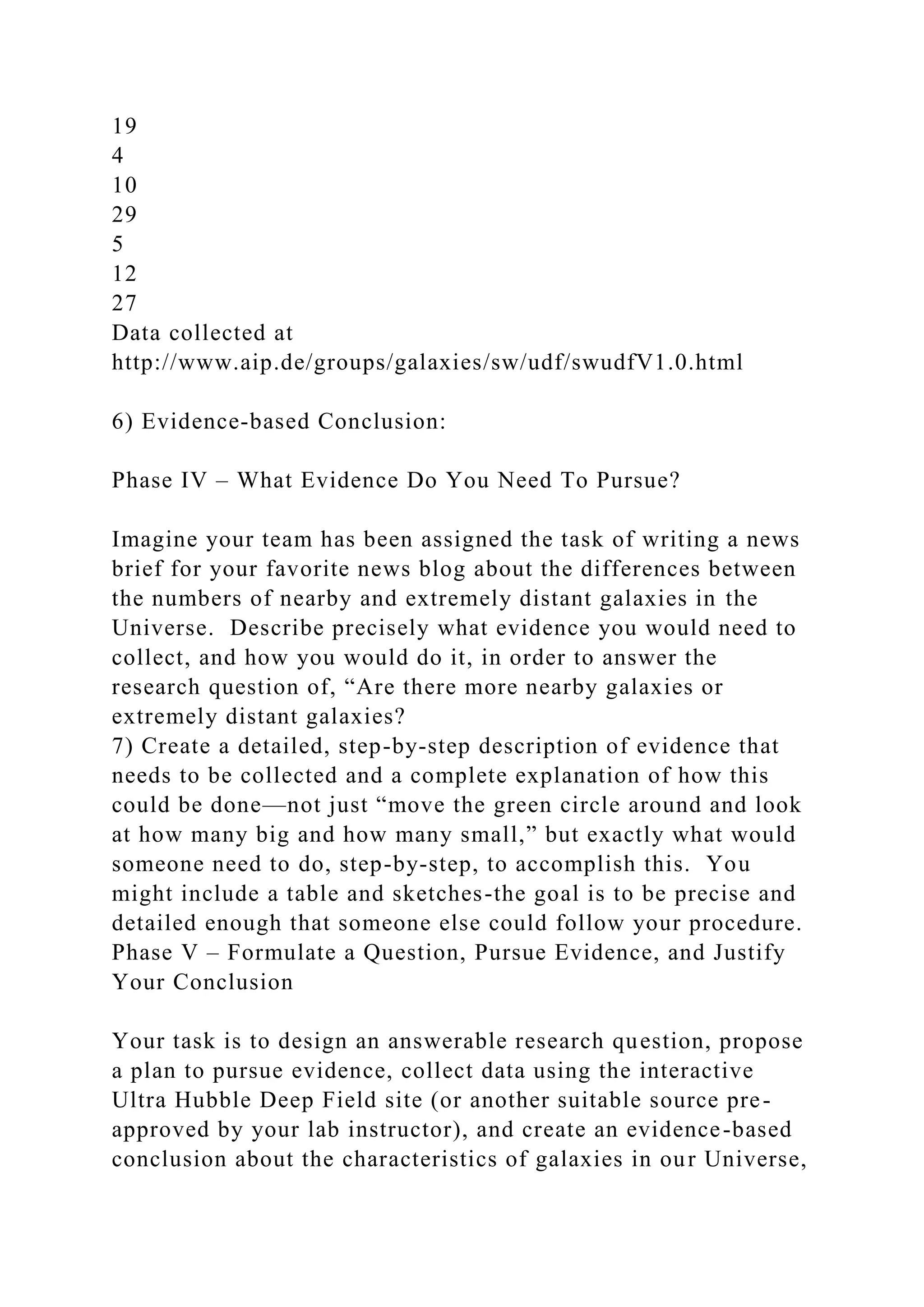The document outlines a structured inquiry-based activity for students to explore the motion of the sun and stars in the sky using simulations. It includes various phases focused on observation, data collection, and conclusion formulation regarding celestial movements over time. The activity aims to enhance understanding of astronomical concepts such as sunset times, star positions, and the characteristics of galaxies.










